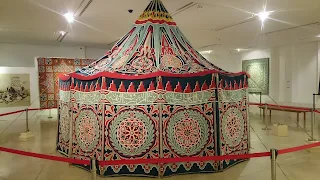Turning Tents into Art: Khayamiya and the Fight Against Homelessness
Have You Ever Wondered How a Tent Could Become a Symbol of Hope?
When Art Becomes Shelter: Reimagining Homeless Tents Through Khayamiya
Dignity Through Design
Community Identity
Storytelling Through Fabric
Why Khayamiya-Inspired Projects for Homelessness Matter
Art as Emotional Uplift
Addressing Criticism: Balancing Practicality and Healing
Art as Emotional Uplift
Art has the power to uplift spirits, foster hope, and provide a sense of agency. For individuals experiencing homelessness, creating or living in art-infused shelters can transform their environments into expressions of resilience and humanity. This helps people feel seen, valued, and connected.
Addressing Criticism: Balancing Practicality and Healing
Some may argue that resources should focus on permanent housing. While housing is the ultimate solution, art projects address emotional and psychological needs, complementing practical solutions. Beautifying shelters also shifts public perceptions, building broader support for systemic change.
Connecting to Broader Social Issues
This initiative emphasizes social inclusion, human dignity, and the power of art to create change. Art creates platforms for connection and storytelling, fostering collective responsibility and challenging societal neglect of homelessness.
Community Art Projects in Action
For Schools
- Host workshops where students create fabric squares with messages of hope to decorate tents.
- Partner with shelters for art therapy sessions, allowing residents to personalize their designs.
For Churches
- Organize “tent decorating” events where volunteers and homeless individuals collaborate on meaningful art.
- Collect blankets, sleeping bags, and art panels for shelters during outreach programs.
For Senior Centers
- Engage sewing circles in creating Khayamiya-inspired quilts for those in need.
- Host intergenerational storytelling workshops, where seniors and homeless individuals create fabric designs together.
Addressing Safety Concerns
Some may worry that brightly decorated tents could attract unwanted attention or pose safety risks. However, visibility often increases safety by fostering community awareness and accountability.
Ways to Ensure Safety:
- Partner with local shelters and organizations to provide guidance on safety protocols and participant support.
- Prioritize consent and agency by ensuring individuals willingly participate and control how their stories are shared.
- Consider location and context to ensure art-infused tents are displayed in safe, appropriate spaces.
- Foster a sense of community by encouraging residents to embrace the tents as part of a shared art project.
- Provide additional support, such as self-defense classes or community watch programs, if concerns arise.





